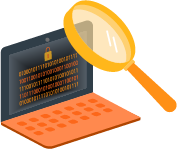A stale cybersecurity strategy is a weak cybersecurity strategy. That’s why it’s of paramount importance for businesses to acknowledge new cybersecurity trends to design and implement a robust and resilient cybersecurity strategy for 2025.
As expected, many of 2025’s biggest cybersecurity trends are related to artificial intelligence (AI). However, advancements in other technologies and trends like quantum computing, cryptocurrency, and cloud computing will also have a major part to play in how enterprises protect themselves in 2025.
While new technologies offer unlimited opportunities to scale and optimize operations, they are also rife with risks that can lead to disasters including data breaches, compliance violations, and reputational harm. If businesses can successfully develop a strong cybersecurity strategy for 2025, they can deftly mitigate the most pressing cyber risks while making the most of new technologies.
What is a cybersecurity strategy?
Before we dive into our list, let’s get on the same page about what a cybersecurity strategy is. A cybersecurity strategy describes the overall approach to identifying and addressing dangerous cyber risks. This includes tools, processes, personnel, workflows, and various other controls to keep threat actors at bay and sensitive data (like business secrets and customers’ personal data) safe from harm’s way.
The strongest cybersecurity strategies are those that evolve to address new threats and attack trends. As long as businesses keep their cybersecurity strategy proactive and fresh, they can discover and fix any risk in their IT environments. Now let’s explore some ways businesses can ensure that their cybersecurity strategy for 2025 is powerful.
Top 13 Tips for Developing a Strong Cybersecurity Strategy for 2025
The following are some critical components that enterprises from all sectors should consider when designing and implementing their cybersecurity strategy for 2025.
1. Implement Zero Trust Security
While zero trust isn’t a new approach to mitigating security threats and protecting sensitive data, businesses must ensure that they make zero trust a principal pillar of their cybersecurity strategy in 2025. The premise of zero trust security is that no user who attempts to access your IT environment should be considered trustworthy. Instead, they have to complete strict authentication and authorization protocols to prove their legitimacy.
According to Gartner, 6 out of 10 enterprises that have implemented zero trust apply it to only 50% of their environments or less. With the immense velocity and complexity of cyberattacks in 2025, the scope of zero trust must expand. If enterprises enforce zero trust principles like least privilege, micro-segmentation, “never trust, always verify”, continuous verification, and multi-factor authentication (MFA), they will be safe from 2025’s most potent emerging threats.
2. Modernize Identity and Access Management (IAM)
Like zero trust, many businesses are familiar with IAM and some already have security systems in place to manage digital identities and access controls. However, as enterprises’ IT and cloud computing architecture get more dynamic and threat actors’ weapons get more dangerous, there’s an urgent need to optimize and update IAM controls in 2025.
In recent years, many data breaches have stemmed from overprivileged digital identities. With a growing number of remote workers and enterprise endpoints, this trend is likely to continue in 2025. To guarantee safe access for legitimate users to critical resources and flag suspicious behaviors in enterprise IT environments, businesses need to take IAM-related cybersecurity threats very seriously in 2025. The solution is simple: Integrate IAM into the overall cybersecurity strategy instead of treating it like an afterthought.
3. Secure Software Supply Chains
Every year, costs resulting from supply chain attacks increase, and 2025 will be no exception. Gartner reports that, by 2031, software supply chain attacks could cause damages up to $138 billion. Businesses rely on numerous third-party providers to optimize their IT environments and operations, and protecting this software supply chain should be treated as nothing less than essential.
There are a few different ways businesses can address supply chain security in their cybersecurity strategy in 2025. Some simple steps include achieving visibility across the entire supply chain, regularly assessing third-party vendor risks, performing frequent cybersecurity audits, monitoring external providers, and ensuring best practices for coding.
4. Prepare for Quantum Computing Risks
Even though quantum computing is still in a nascent stage, businesses must plan for new cybersecurity risks that may arrive with its entry into the mainstream. The biggest security threat that quantum computing poses is that it can break through current modes of encryption. If current encryption protocols are no longer safe, then businesses need to completely revamp their data protection strategies.
Even though the exact cybersecurity risks of quantum computing are vague, enterprises should kickstart more stringent security measures to ensure data privacy. A simple way to sow the seeds of post-quantum security is to research and experiment with hash-based cryptography, lattice-based cryptography, and code-based cryptography. While businesses don’t have to make post-quantum cryptography the cornerstone of their 2025 cybersecurity strategy, proactive research and risk management can be a blessing for the future.
5. Secure Internet-of-Things aka IoT Devices
IoT devices are powerful engines of success for enterprises of all backgrounds. They can range from industrial machinery to vehicles. According to McKinsey, IoT technologies can create a value of up to $12.6 trillion by 2030. While advancements in IoT technologies can boost operations, they also significantly expand an enterprise’s attack surface (which is the sum of all potential entryways for threat actors to exploit).
If businesses want to continue reaping the benefits of IoT devices in 2025, it’s important to make IoT security a major component of their cybersecurity strategy. Some critical IoT security best practices include regularly updating software and firmware, segmenting the enterprise network, implementing physical security mechanisms, improving password and access hygiene, monitoring usage and traffic, and unlocking more value from IoT data.
6. Break Down Security Silos
In 2025, security silos will be synonymous with security threats. Security silos describe situations where critical security information, tools, or capabilities are disjointed and isolated from one another. No matter how robust an enterprise’s security tools are, new threats may arise if those tools aren’t connected. Furthermore, as enterprises have more complex multi-cloud and hybrid cloud environments, it’s important that their security tools can exchange critical information, provide a unified view of their IT ecosystem, and address all potential attack vectors.
Luckily for businesses, there are a few simple ways to address security silos in their cybersecurity strategy for 2025. One option is commissioning the services of a managed security services provider (MSSP) who can help unify a security stack. Another option is to leverage a comprehensive security platform with many integration options to connect disparate security tools.
7. Fortify Against AI-Driven Ransomware
In the last few years, hackers have been deploying dangerous ransomware attacks. These attacks involve blocking an enterprise’s access to its own sensitive data, critical infrastructure, or cloud services like storage buckets until a ransom is paid. The general advice is to involve law enforcement instead of paying the ransom. However, every enterprise’s first move should be addressing ransomware attacks in their cybersecurity strategy.
The reason ransomware is particularly dangerous in 2025 is that threat actors use AI and machine learning (ML) to conduct attacks at a scale and speed that very few are prepared for. The only way to prepare for these AI-driven ransomware attacks is by using AI-driven security tools, encrypting sensitive information as it moves across IT environments, optimizing access controls, and having predefined playbooks so that key security, compliance, and legal stakeholders know what to do if and when a ransomware attack strikes.
8. Address 5G Security
By providing immense speeds at minimal latency, 5G connectivity is the fuel that will power the next era of new technologies. While the expansion of 5G connectivity is transforming the world, it also introduces cybersecurity complexities. Since every enterprise is leveraging the capabilities of 5G connectivity, 2025 is the ideal juncture to make 5G security a cornerstone of their cybersecurity strategy.
5G enables seamless connections and data transfers between various networks, systems, and endpoints (IoT machines, computers, mobile devices). However, 5G also makes enterprises more susceptible to vulnerabilities, unauthorized access, and other potent network security threats. To tackle 5G network security in their cybersecurity strategy in 2025, enterprises must focus on data encryption, strong access and authentication protocols, and tools to monitor network traffic.
9. Mitigate Social Engineering Attacks
As many enterprises may already know, social engineering attacks are unique types of cyberattacks that target an organization’s weakest pillar: people. By exploiting psychological vulnerabilities, social engineering attacks trick an enterprise’s employees into divulging sensitive information or providing access to cloud services.
Social engineering attacks are especially dangerous in 2025 because threat actors have begun to use generative AI (GenAI) to compose highly believable emails and messages in an attack type known as phishing. With phishing attacks becoming more advanced with every passing day, businesses need a strategy to ward them off. At the core of this strategy should be a combination of security controls and awareness and training campaigns that highlight the dangers of AI-enabled social engineering attacks, phishing attacks, and other insider threats.
10. Revamp Threat Intelligence Strategies
Businesses must remember that, just like the surrounding threat landscape, the cybersecurity landscape is also constantly evolving. The strength of an enterprise’s security posture hinges on how accurately and quickly it can analyze threat information and generate actionable insights. Even the slightest delay in generating critical security insights can lead to devastating cyberattacks including malware, ransomware, and DDoS attacks.
Enterprises’ cybersecurity strategies may already include a threat intelligence component. However, in 2025, businesses must update how they approach threat intelligence. Step number one: Businesses must choose AI-powered threat intelligence platforms because it’s the only way to ingest and analyze the immense volumes of threat data available today. These platforms should ideally cross-analyze external threat intelligence sources with threat data from internal monitoring tools. Between the two, an AI-powered threat intelligence solution will be able to pinpoint threats and attacks before they cause damage.
11. Address New Compliance Obligations
As many enterprises know, cybersecurity and compliance are closely interlinked. If a business’s cybersecurity pillar is weak, it will affect its compliance posture, and vice versa. Therefore, CISOs and other leaders have to ensure that businesses address new compliance obligations in 2025. This is vital because even the smallest compliance failure can end up costing a lot of money. Furthermore, with the rise of generative AI and other new technologies, regulators are implementing new governance and compliance requirements.
In addition to commonly known compliance frameworks like GDPR, CCPA, and PCI DSS, businesses from specific industries need to address different compliance requirements. For example, healthcare enterprises must follow HIPAA. Other important compliance obligations to know about include DORA, NIS2, and FedRAMP.
12. Optimize Cloud-Native Security
Most businesses use cloud services from multiple providers. While some enterprise IT environments are exclusively cloud-based, others use hybrid cloud strategies that include a mix of cloud and on-premises environments. While the cloud is an invaluable resource for enterprises in 2025, it’s important to ensure that cloud security is up to the mark. If cloud security is neglected, cybercriminals can take advantage of the cloud’s many unique vulnerabilities.
From a strategy perspective, the key is to ensure that security teams have the right tools and capabilities to ward off various kinds of cloud-based cybercrime. Instead of repurposing legacy tools in cloud contexts, businesses should center their cloud security strategy around cloud-native security tools, which are basically security tools that were designed and built to deal with the intricacies of the cloud.
13. Automate Threat Detection and Incident Response
In 2025, cybersecurity professionals will have to deal with countless cyber incidents. Businesses don’t have to panic because not all cloud incidents are critical. However, it’s essential to identify incidents quickly, sort them out based on how dangerous they are, and take the appropriate response actions. What’s impossible in 2025 and beyond is to do this manually. There are simply too many incidents for cybersecurity professionals to mitigate one by one.
Therefore, one of the most important initiatives to kickstart 2025’s cybersecurity strategy is ensuring that automation is introduced into threat detection and incident response processes. By using tools and platforms that leverage AI and automation, security teams won’t feel overwhelmed by the growing number of cybersecurity incidents, and incidents can be dealt with before they become disasters.
Conclusion
As we highlighted in this blog post, enterprises have a barrage of new cyber threats and risks that they need to deal with. While this applies every year, the threat landscape is more menacing than ever in 2025. However, businesses don’t have to panic because as long as they develop and implement a robust cybersecurity strategy, there’s no cyberattack or incident that they won’t be able to address.
In this post, we highlighted 13 tips for making an ideal cybersecurity strategy to counter 2025’s emerging threats. They range from implementing zero trust security and modernizing IAM to optimizing cloud-native security and automating threat detection and incident response. By following these tips, businesses can set themselves up for success and cyber resilience.
If businesses find 2025’s cybersecurity challenges overwhelming, a strong option is to consider the services of an MSSP. With a reputed and capable MSSP, developing and implementing a cybersecurity strategy can become simple and efficient.
However a business decides to approach its cybersecurity strategy in 2025, the tips in this blog post are a useful cheat sheet.
Categories: Security, Cyber Security, Network Security, Proactive Network Security, Security Breach, Cloud Computing Security, Managed Security Services, IT Security, Email Security, Digital Transformation, IT, Zero Trust, Cybersecurity Strategy, Identity and Access Management (IAM), Artificial Intelligence (AI) in Cybersecurity, Cloud Security, Quantum Computing Security, Cybersecurity Skills Shortage, Remote Work Security, Zero Trust Security, Shadow IT, Cybersecurity Trends 2025











